Other subsurface-feeding insects
Billbugs
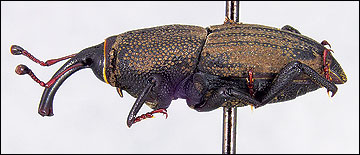 Robert Sites photo.
Robert Sites photo.
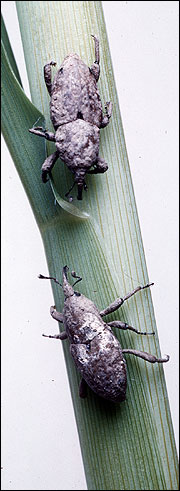
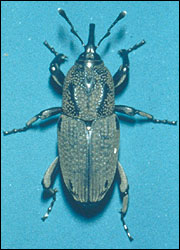
Sphenophorus parvulus
Sphenophorus venatus
Important turfgrass species affected: Zoysiagrass, bermudagrass, Kentucky bluegrass, perennial ryegrass
Billbug damage is one of the most commonly misdiagnosed turfgrass issues. It is often confused with drought, disease, chinch bug or white grub damage. Symptoms of billbug injury are spotty, dead patches of turf that are easily pulled up, with stems breaking off at the crown. In addition, stems are hollowed out and often filled with light brown frass. Adult billbugs overwinter and emerge in the spring to feed by chewing holes in grass stems. At this time, the adults also lay eggs in these cavities. Eggs hatch within the plant, and the larvae eat their way down through the plant and emerge through stolons or rhizomes into the thatch/root zone and continue feeding. Billbug grubs are small, only about ¼ inch long, and legless, unlike other annual white grubs. They can be found in June and July during periods of peak activity and damage. Depending on species, one or multiple generations may occur in a single season. The best time to control a known billbug infestation may be preventively in late April or early May to target the overwintering adults before egg laying begins.
Crane flies
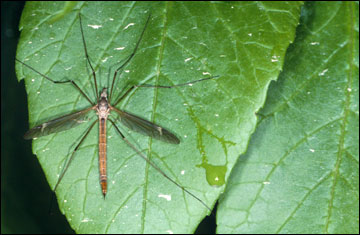 Lee Jenkins Collection photo
Lee Jenkins Collection photo
Tipula spp.
Important turfgrass species affected: None currently in Missouri
Several native crane fly species can be abundant and are generally nondamaging, making correct identification important before any intervention. Adult crane flies resemble and are often mistaken for large mosquitoes. They emerge in late August through September. Larvae overwinter, with feeding damage most evident in spring. A healthy turfgrass stand can support 40 to 60 crane fly larvae per square foot, so proper fertility, irrigation and mowing practices should be considered before population reduction.
Mole crickets
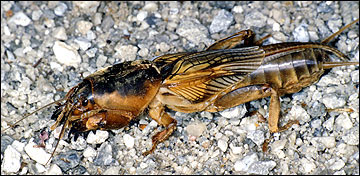 Lee Jenkins Collection photo
Lee Jenkins Collection photo
Scapteriscus spp.
Important turfgrass species affected: All
Mole crickets damage plants by feeding and extensive tunneling. The winged cricket is brown to grayish-brown and has front feet that are spadelike for digging and burrowing beneath the soil surface to feed on turfgrass roots. Heavily infested turfgrass has virtually no root system. Mole crickets in different life stages behave differently, and knowledge of the timing of local population cycles is critical for designing management strategies for particular sites. Mole cricket mating and dispersal flights occur in the spring.